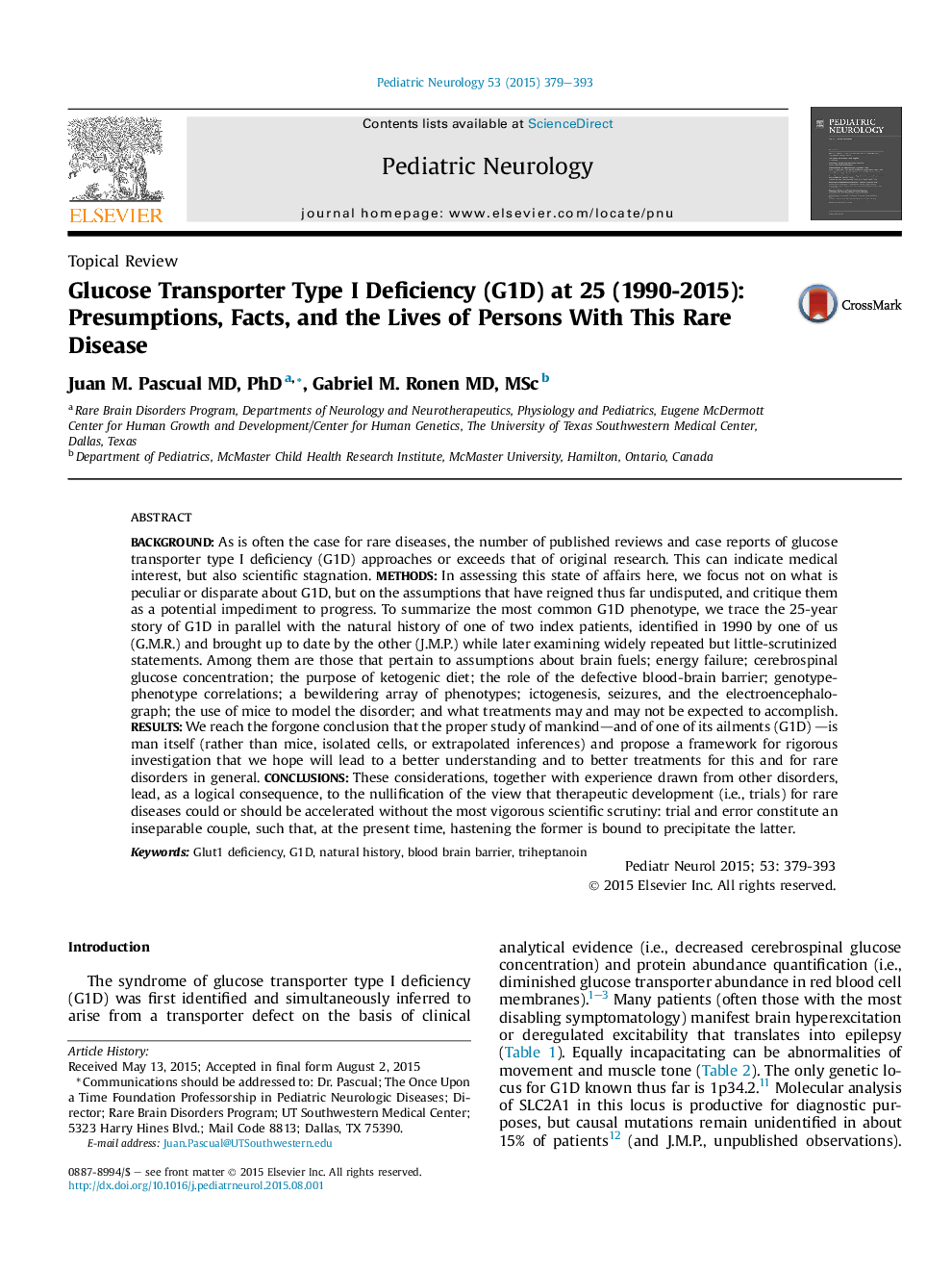| کد مقاله | کد نشریه | سال انتشار | مقاله انگلیسی | نسخه تمام متن |
|---|---|---|---|---|
| 3084405 | 1189766 | 2015 | 15 صفحه PDF | دانلود رایگان |

BackgroundAs is often the case for rare diseases, the number of published reviews and case reports of glucose transporter type I deficiency (G1D) approaches or exceeds that of original research. This can indicate medical interest, but also scientific stagnation.MethodsIn assessing this state of affairs here, we focus not on what is peculiar or disparate about G1D, but on the assumptions that have reigned thus far undisputed, and critique them as a potential impediment to progress. To summarize the most common G1D phenotype, we trace the 25-year story of G1D in parallel with the natural history of one of two index patients, identified in 1990 by one of us (G.M.R.) and brought up to date by the other (J.M.P.) while later examining widely repeated but little-scrutinized statements. Among them are those that pertain to assumptions about brain fuels; energy failure; cerebrospinal glucose concentration; the purpose of ketogenic diet; the role of the defective blood-brain barrier; genotype-phenotype correlations; a bewildering array of phenotypes; ictogenesis, seizures, and the electroencephalograph; the use of mice to model the disorder; and what treatments may and may not be expected to accomplish.ResultsWe reach the forgone conclusion that the proper study of mankind—and of one of its ailments (G1D) —is man itself (rather than mice, isolated cells, or extrapolated inferences) and propose a framework for rigorous investigation that we hope will lead to a better understanding and to better treatments for this and for rare disorders in general.ConclusionsThese considerations, together with experience drawn from other disorders, lead, as a logical consequence, to the nullification of the view that therapeutic development (i.e., trials) for rare diseases could or should be accelerated without the most vigorous scientific scrutiny: trial and error constitute an inseparable couple, such that, at the present time, hastening the former is bound to precipitate the latter.
Journal: Pediatric Neurology - Volume 53, Issue 5, November 2015, Pages 379–393